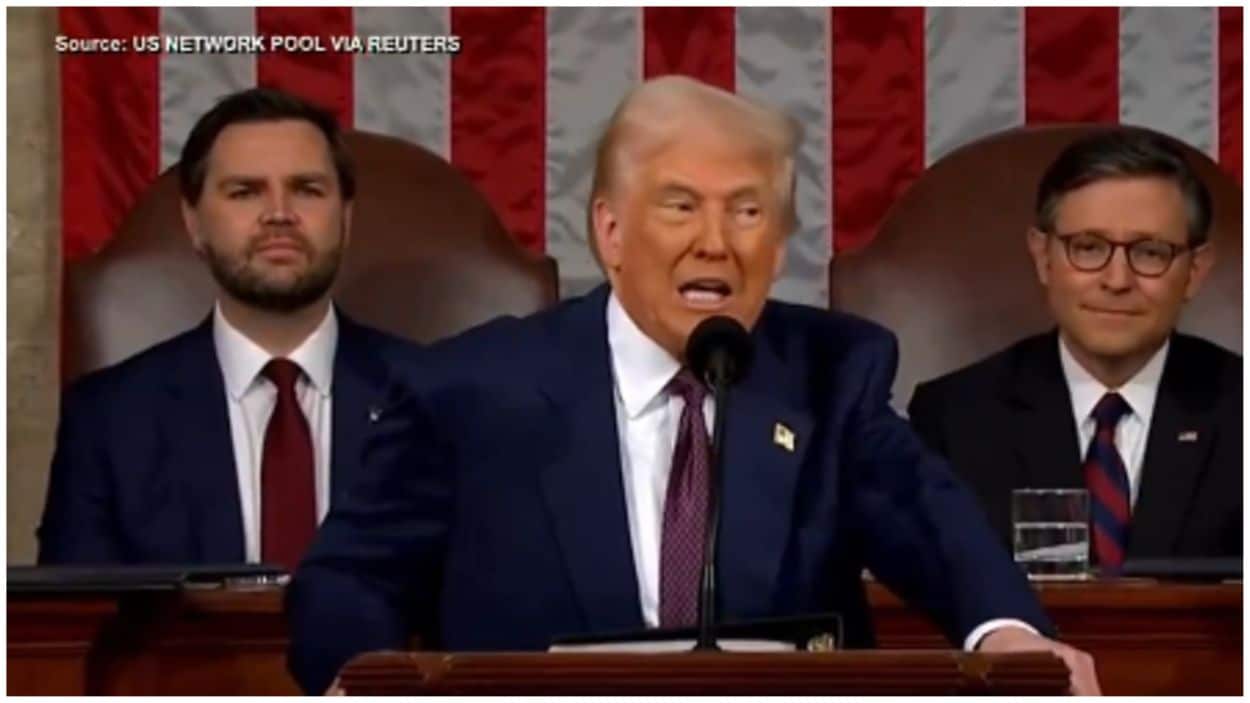President Donald Trump’s “Big Beautiful Bill” has cleared a critical Senate procedural vote, moving closer to becoming law. The 940-page legislation, packed with tax cuts, border security funding, and spending reforms, aims to fulfil Trump’s campaign promises.
Despite a tense 51-49 vote on June 28, 2025, the bill is expected to face further debate and potential changes. This article breaks down the bill’s key provisions, its implications, and what lies ahead, drawing on credible sources like NPR and the Congressional Budget Office (CBO).
Late Saturday, Senate Republicans advanced Trump’s bill with a 51-49 vote, overcoming delays and negotiations. Vice President JD Vance stood ready to break a tie, as two Republicans joined Democrats in opposition. The dramatic session, marked by hours of standoffs and private meetings, underscores the bill’s contentious nature. Senators now face all-night debates and amendments, with a July 4 deadline looming. If passed, the bill returns to the House for final approval before reaching Trump’s desk.
"VERY PROUD OF THE REPUBLICAN PARTY TONIGHT. GOD BLESS YOU ALL!" –President Donald J. Trump pic.twitter.com/15E3zWD9aX
— The White House (@WhiteHouse) June 29, 2025The bill’s passage is not guaranteed. Senate Republicans must navigate internal divisions, with some, like Senator Rand Paul, opposing the $5 trillion debt limit increase. House Republicans, particularly those from high-tax states, demand a $40,000 SALT deduction cap, which the Senate’s $10,000 placeholder risks derailing. These tensions could complicate final negotiations, requiring careful balancing to maintain GOP support.
Key Provisions of the Big Beautiful Bill
Tax Cuts and Economic Impacts
The bill prioritises $3.8 trillion in tax cuts, making Trump’s 2017 Tax Cuts and Jobs Act permanent to avoid a tax hike post-December 2025. It introduces temporary tax breaks, including exemptions from taxes on tips, overtime pay, and certain auto loans, which expire in 2028. Seniors earning under $75,000 gain a $6,000 deduction, also temporary. The child tax credit rises from $2,000 to $2,200, though low-income families may not fully benefit. The SALT deduction cap quadruples to $40,000 for five years, aiding high-tax states like New York. According to the CBO, wealthy households could gain $12,000 annually, while the poorest lose $1,600, with middle-income taxpayers seeing $500–$1,500 in relief.
Border Security and Deportation Funding
Trump’s bill allocates $350 billion for border and national security, including $46 billion for the U.S.-Mexico border wall and $45 billion for 100,000 migrant detention beds. It funds 10,000 new Immigration and Customs Enforcement officers with $10,000 bonuses and boosts Border Patrol. The goal is to deport 1 million people annually, supported by a $10 billion fund for states aiding federal enforcement and a $3.5 billion fund for the attorney general. New immigrant fees, including those for asylum seekers, help offset costs; however, a proposed $1,000 asylum fee was ruled non-compliant with Senate rules.
"Tonight we saw a GREAT VICTORY in the Senate with the “GREAT, BIG, BEAUTIFUL BILL,” but, it wouldn’t have happened without the Fantastic Work of Senator Rick Scott, Senator Mike Lee, Senator Ron Johnson, and Senator Cynthia Lummis. They, along with all of the other Republican… pic.twitter.com/RHy9tjsr3o
— The White House (@WhiteHouse) June 29, 2025Defense and National Priorities
The Pentagon receives billions for shipbuilding, munitions, and troop quality-of-life measures, plus $25 billion for the Golden Dome missile defence system. The Defence Department gets $1 billion for border security. The bill also funds the Artemis moon mission, Mars exploration, and $40 million for Trump’s National Garden of American Heroes, reflecting GOP priorities.
Spending Cuts and Program Reforms
To offset costs, the bill cuts Medicaid, food stamps, and green energy incentives, targeting $1.5 trillion in savings. Medicaid, serving 80 million, faces 80-hour monthly work requirements for adults up to age 65, including parents of children over 14, and a $35 co-payment for services. Food stamps, used by 40 million, also see work requirements for adults up to 65. The CBO estimates that 10.9 million could lose health coverage and 3 million could lose eligibility for food stamps. Green energy tax credits, such as the $7,500 electric vehicle credit, face phase-outs, although nuclear projects retain some benefits. A $25 billion Rural Hospital Transformation Program aims to mitigate the impact of Medicaid cuts on rural healthcare.
Trump’s “big beautiful bill” is probably the worst piece of legislation in modern history. It attacks the most vulnerable people while giving massive tax breaks to billionaires.
Please call your member of Congress. Let’s do everything we can to defeat this horrific bill. pic.twitter.com/AVuMeClfDW
— Bernie Sanders (@BernieSanders) June 27, 2025Additional Provisions
The bill introduces “Trump Accounts,” depositing $1,000 for children born between 2024 and 2028 to support education or home purchases. It imposes a university endowment tax, eliminates a $200 gun silencer tax, and bars Medicaid funding for Planned Parenthood. The Radiation Exposure Compensation Act is expanded, and $88 million is allocated to a pandemic response committee. A controversial freeze on AI regulation, tied to federal infrastructure funds, faces opposition from 17 Republican governors. The debt limit rises by $5 trillion to avoid a summer default.
Financial Implications and Criticisms
The CBO estimates the House bill adds $2.4 trillion to deficits over a decade, while the Committee for a Responsible Federal Budget pegs the Senate version at $4.2 trillion. Senate Republicans argue a “current policy” baseline lowers the tax cut cost to $441 billion, a claim Democrats call “magic math.” Critics, including Elon Musk and Jamie Dimon, warn of debt risks, with U.S. debt at 124% of GDP. The bill’s $5 trillion debt limit increase has drawn criticism from fiscal conservatives, such as Senator Paul.
Democrats, led by House Minority Leader Hakeem Jeffries, label the bill a “regressive tax scam,” arguing it favours the wealthy while cutting safety nets. They highlight Medicaid and food stamp losses, vowing to use the bill against Republicans in the 2026 midterms. The CBO’s analysis of reduced benefits for low-income households fuels their critique.






